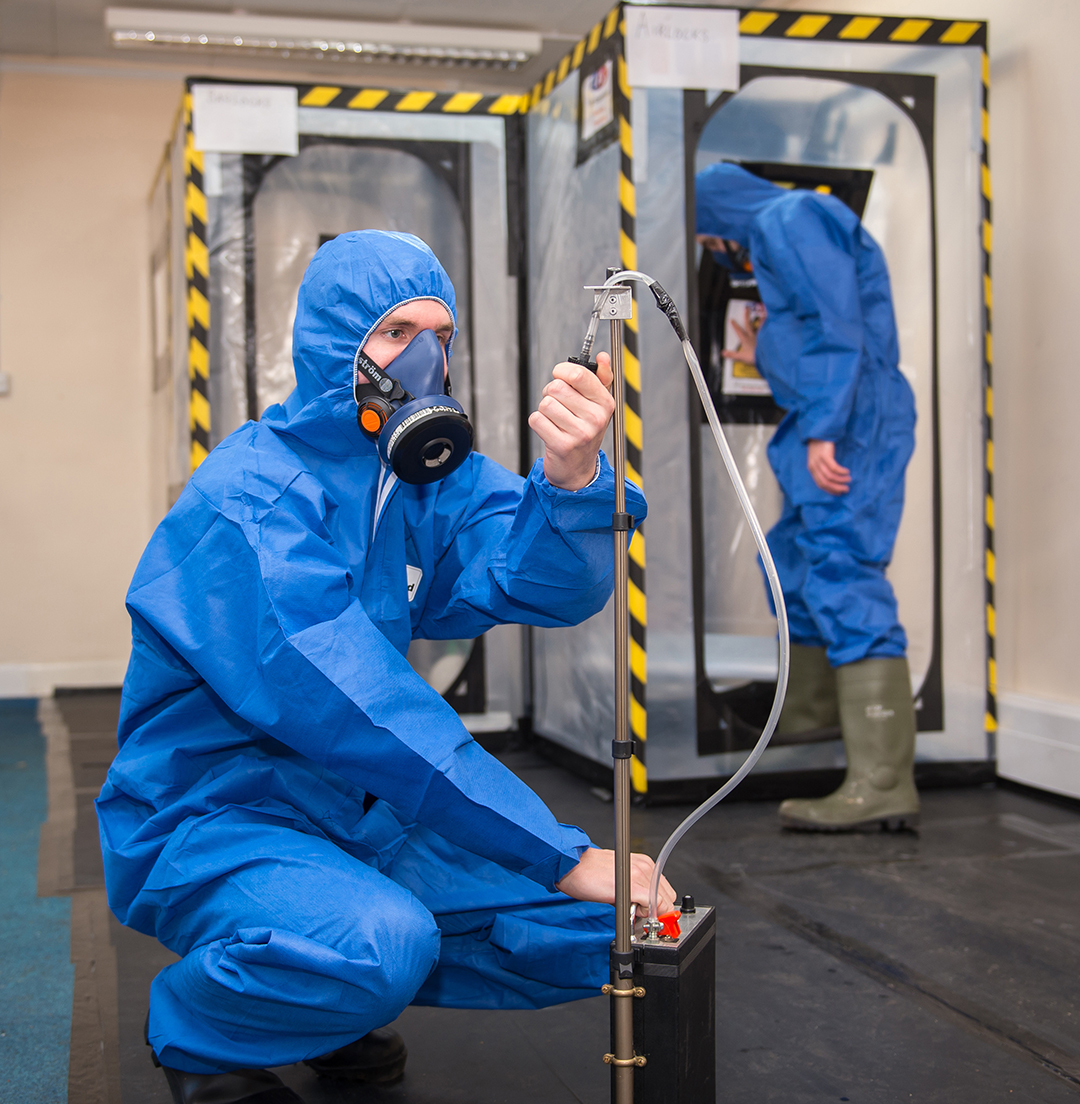Asbestos Services
The presence of asbestos, or the potential thereof, can drastically impact renovation schedules, demolition schedules, and your safety. By taking a proactive approach and working with our professional Inspectors, you will reduce the chance of accidental asbestos release, which leads to project delays, additional costs, and dangerous exposures that may lead to serious health consequences and/or litigation.
Background of Asbestos
Asbestos is a naturally occurring fibrous mineral composed of soft, thin, needle-like fibers, resistant to heat, electricity, and corrosion. For these reasons, asbestos was initially a common additive in many building materials. In fact, Asbestos Containing Materials (ACMs) are commonly present in building materials used before 1990.
It is now known that Asbestos is an extremely hazardous and potentially deadly material. Asbestos airborne release and human exposure typically occurs when ACMs are disturbed during renovations or demolition projects, or deteriorate during the normal aging process, resulting in the unexpected release of deadly fibres. Following inhalation, asbestos can become trapped in the lungs, which results in lung scarring, inflammation, and severe health complications including Asbestosis, Lung Cancer, and Mesothelioma. Sadly, these diseases typically manifest 15 to 20 years after exposure.

Asbestos Containing Material Inventory
An Asbestos Containing Material Inventory (Asbestos Inventory), must be completed prior to the start of any demolition or renovation project. In fact, it is legally required that all ACMs be identified prior to any work on buildings constructed before 1990.
Prairie Environmental is the leading all-inclusive company that performs a comprehensive or limited Asbestos Inventory tailored to meet unique project scopes and requirements. Prairie Environmental’s extensive industry experience keeps costs down by safely limiting the number of samples collected, while ensuring regulatory requirements and safety margins are fully maintained.
An Asbestos Inventory includes the following components;
- Conduct on-site inspection to identify of all asbestos-suspect materials
- Conduct representative bulk sampling of asbestos-suspect materials
- Employ chain-of-custody protocols to submit bulk samples to an accredited laboratory for conclusive asbestos identification testing
- Provide a professional accredited report outlining inspection findings, interpret and convey laboratory results, and deliver recommendations regarding the management of asbestos removal or encapsulation in accordance with Provincial or Federal regulations.
- Demolition-level Asbestos Inventory
- Renovation-level Asbestos Inventory
- Management-level Asbestos Inventory
Asbestos Control Plan (ACP)
As stated in the Manitoba Regulations (Guide for Asbestos Management - May 2017), an Asbestos Control Plan (ACP) must be developed and implemented when ACMs are suspected or present at workplaces, workplace locations, buildings or structures. ACP’s are designed to prevent the release of asbestos through education and by overseeing safe removal procedures.
In addition to identifying ACMs, an ACP includes:
- Delegation of Responsibilities to Project Manager and Remediation Contractors
- Communication of Asbestos Awareness to building Occupants and Remediation Contractors
- Employee Training Requirements
- Repair and Maintenance of ACMs
- Disposal of ACMs
- Required Documentation for Regulatory Authorities.

Asbestos Air Monitoring and Inspection Services
Asbestos Abatement and Air Monitoring
Prairie Environmental are the leading experts in asbestos inspections and air monitoring services that ensure worker/occupancy safety. Based on the type of asbestos material being removed, varying procedures are required (i.e. Type 1, Type 2, and Type 3). Each ‘Type’ requires a unique inspection criterion and air monitoring procedure and/or frequency. Prairie Environmental has experience performing all inspection ‘Types’ and will explain which ‘Type’ is required to ensure occupancy safety and regulatory compliance. All air samples are analyzed in accordance with National Institute for Occupational Safety and Health (NIOSH) method 7400 Asbestos and other fibers by Phase Contrast Microscopy (PCM).
Accidental Disturbance of Asbestos
Prairie Environmental also performs building or area assessments where ACMs have been accidentally disturbed, resulting in acute dangerous fiber release. When this occurs, it is essential to obtain the guidance from an experienced consultant like Prairie Environmental as each building and material has unique features which impact the spread, concentration, and thus ‘danger threat’ of released ACMs.
Prairie Environmental will identify the steps required to addresses an accidental ACM disturbance and supervise abatement contractors to ensure a safe and complete abatement where procedural guidelines and regulations are met.


